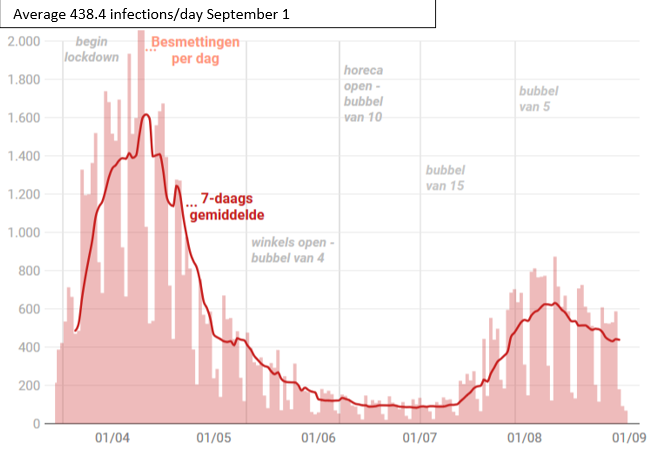Interview with Dr. Mohammad Mehdi Feizabadi, the President of the 21st International Virtual Congress of Microbiology
 |
On the sidelines of the congress, an interview was conducted with Dr. Mohammad Mehdi Feizabadi in which he elaborated on his line of work, experience, microbiology and resistance, and so on as follows: |
Q: Could you please give an overview of your work experience?
A: I have been working in different areas of microbiology covering the following topics:
The subject of my PhD thesis was to develop a means to cross Penicillium chrysogenum, producer,
The beta-lactam antibiotic penicillin, with Acremonium chrysogenum (formerly Cephalosporium acremonium) producer of cephalosporins (another β-lactam antibiotic to obtain via combinatorial biosynthesis hybrid β -lactam antibiotics. In the beginning of the 1970’s recombinant DNA technology was just started, and didn’t exist yet for fungi. The research resulted in the development of protoplast fusion for fungi, which allowed to cross narrowly related species but not P. chrysogenum with A. chrysogenum. No new hybrid antibiotics could be obtained either. Nevertheless, even today the method is still used for several purposes with different fungi.
After my PhD thesis I started my own research group at first with a main focus on Streptomycetes, a well-known producer of secondary metabolites. Besides developing tools for manipulating the strain, a major emphasis was on protein secretion amongst others, to use Streptomyces as an efficient cell factory to produce therapeutically and biotechnologically important proteins. As such the protein secretion was studied in much detail important for the rational design of strain improvement. As a spin-off of the protein secretion research, pathogenic bacteria became also topic of research including Legionella pneumophila, the causative agent of the often lethal legionnaire’s disease and Staphylococcus aureus, a clinically important pathogen with problems of multidrug resistance, on the one hand to investigate the importance of protein secretion in pathogenicity, and otherwise to look for small molecules that could block the protein secretion pathway. Proteins of the secretion pathway are considered new targets to combat pathogenic bacteria including S. aureus. Very recently, the proof of principle was given by reports of a US-based research group showing that derivatives of arylomycins show potent inhibitory activity against antibiotic resistant pathogens. It further shows that fundamental research is indispensable to find new targets and molecules to combat pathogenic bacteria.
Concerning teaching, I have taught medical and applied microbiology, antibiotics and virology both at KU Leuven and Free University Brussels.
Q: What encouraged you to do research in microbiology and resistance?
A: I have always been fascinated by the tiny creatures of the microbial world, how they can be helpful in human life to deliver valuable compounds such as enzymes and drugs, their beneficial importance in life and nature, which became recently even more in focus by investigating the microbiome, but otherwise they can be very threatening, causing fatal diseases. Whereas most bacteria could be combated with different antibiotics, this is becoming more and more uncertain for different bacteria due to the worldwide resistance problem. Therefore, besides to stress that abuse and overconsumption of antibiotics should be banned not only in human medicine, but also in veterinary medicine and husbandry, it is important that more research should be carried out to find novel, effective antibiotics. With my research I hope that I can contribute to this goal. In this framework it is also important that enough financial support should be provided by the responsible authorities.
Q: What research projects did you do in the field of drug resistance and what were the results?
A: As mentioned before, my research focuses amongst others to find and evaluate new antibiotic targets able to combat pathogenic bacteria with focus on the protein secretion pathway, more in particular the signal peptidase and SecA of the general secretion pathway, and develop a high throughput screening system to quickly identify molecules of interest, as explained during my presentation at the 21st International Virtual Congress of Microbiology.
Q: Could you please list some of the main problems in the field of microbiology in Europe in particular Belgium?
A: In the framework of antibacterial resistance, in Europe the situation is not everywhere the same due to different policies and differences in health care. Whereas in the more Northern countries there are less problems with AMR, in South and East Europe the problems are much bigger, but the general trend remains that AMR is on the rise everywhere. Notwithstanding special care also in relation to S. aureus, in Belgium too hospital acquired infections with resistant bacteria cannot be excluded. Although many precautions are taken, it happens that somebody becomes infected with resistant bacteria, which in some cases can lead to untreatable infections.
Q: What is the future outcome of rapid diagnostic Microbiology techniques?
A: In clinical/microbial diagnostic laboratories, much investment is done in automation to speed up the outcome of results. Use is being made of the new techniques such as MALDI-TOF spectroscopy and even whole genome sequencing is now considered appropriate. In Belgium scaling up of clinical labs is stimulated which is a cost-saving operation.
Q: What advice do you have for active members in microbiology and antibiotic resistance?
A: Microbiologists should advocate that research, and industry and society should work together and inform society about the beneficial and adverse aspects of microbiology and to highlight the global threat caused by antibiotic resistance. Specialist groups in emerging topics and advocacy groups promoting public policy and communities are at the basis of developments in microbiology. Attention should be made on infection prevention through antibiotic stewardship and hospital infection-control programs and the reduction of antibiotic use in farm animals and food production are essential to avoid infection and antibiotic resistance as much as possible. There should also be increased incentives for antibiotic development with support of governmental and intergovernmental institutions. When new antibiotics with new mechanisms of action come on the market, they should become available worldwide, but used with care.
Q: What is your prediction for antibiotics and resistance in future?
A: Antibiotic resistance will remain a global threat, notwithstanding several warnings of the World Health Organization. Antibiotic resistance is accelerated by the misuse and overuse of antibiotics, as well as poor infection prevention and control. It will lead to higher medical costs, prolonged hospital stays, and increased mortality. As long as the mentality of the use of antibiotics is not changed the threat will remain. Governmental institutions and healthcare workers will play an important role to stress on the danger of overuse of antibiotics. Today big pharma industry is mainly for economical reason not interested anymore in developing new antibiotics, except in the modification of existing antibiotics of their portfolio, the search for novel antibiotics is and will mainly be done in small and medium sized companies, and research institutions. Novel approaches are being developed based on molecular techniques, next generation sequencing and other smart approaches.
Q: To what extent can the protein secretory systems contribute to biotechnology fields?
A: Protein secretory systems are important in different ways. First of all, many biologics including vaccines and therapeutic compounds are produced via heterologous production/secretion systems. Furthermore, all kind of enzymes such as ingredients for washing powder, additives used in food and feed industries, for green energy and so on are often industrially produced in heterologous secretion systems since downstream processing can be more efficiently be done, and yields can be higher. An efficient production process will reduce the production costs making it economically more valuable and, on the other hand, will lead to less expensive purchase for consumers.
As explained in my talk on the occasion of the 21st Intl. Virtual Congress of Microbiology (20.08.2020), the proteins of the secretion pathway can be interesting new targets to find new molecules with antibiotic activity to combat pathogenic bacteria or to decrease their virulence.
Q: What suggestions do you have for Iranian students studying microbiology?
A: Microbiology studies are today very fascinating for several reasons: on one hand the new, rapid evolving technologies allow to get more insight in the biochemical processes of micro-organisms occurring during growth, differentiation, protein and (secondary) metabolite production as well as in processes leading to virulence and antibiotic resistance. It is therefore important to get acquainted to the new techniques, and become specialist in one of the microbial sub-disciplines. Training in specialized, well equipped laboratories will therefore be very helpful.
Q: What is the current situation of COVID-19 in terms of prevalence and control of disease in Belgium?
A: When the COVID-19 pandemic hit Belgium, at first there was a general lockdown meaning that only one could leave home for essential business, pharmacies, shops for food and essential materials remained open, but the number of people that simultaneous could enter the shop was restricted depending on the size of the shop. Everything needed to be disinfected carefully. Individual walking, individual sports including running and cycling remained allowed. Non-essential work in companies needed to be done at home via internet. Also, schools and universities were closed, and lectures were organized on-line. Hospital care was restricted to emergency cases, so that enough intensive care facilities remained available for all Covid-19 patients, which became never a problem. Whereas in the beginning of the crisis, not enough testing could be done as a consequence of shortage of test materials, now the problem is over, and tests are carried out when considered opportune. Every day information is given about the number of infections, number of hospital uptakes including IC, and number of deaths.
When the situation improved, everything became somewhat more relaxed, until a second wave of infections arose. Whereas in the first wave people in elderly care houses were mostly hit (more than 70% of deceased people were over 75 years of age) now younger people become infected. As a consequence, rules became stricter again, and in many situations face masks are obligatory. Also, in schools (opening September 1st) face masks are obligatory for children from 12 years on, as well as for teachers. Only during breaks in open air, wearing a mask is not necessary.
Q: How do you manage the teaching activities and research program at your University under COVID- 19?
A: For universities and high schools, the decrees of the government count as well as specific rules of the University.
For universities, in the buildings face masks are now compulsory, also during teaching and all kind of exams, strict hygiene (washing and disinfection of hands and materials) and physical distance (1.5 m) are maintained; rooms should be ventilated (open windows) as much as possible. For the new academic year (2020-21) KU Leuven will offer as much on-campus education as possible, while always taking into account the latest safety measures. On-campus activity will be increase if the virus is not circulating heavily and if safety allows for it; it will be reduced again as soon as the epidemic flares up and greater caution is required.
For classes in auditoriums, rotation if necessary: each time, one third or one fourth of the students will be in the auditorium, while the others follow the lecture via live streaming. In other cases, blended teaching will be opted. This, too, is a combination of online and face-to-face education: students are actively challenged in the online part to study the subject matter at their own pace, while there is room for in-depth discussions, exercises, case analysis, and more in smaller groups on campus.
The below graph shows the evolution of SARS-CoV-2 infections in Belgium over time:

At the end of the interview, Dr. Mohammad Mehdi Feizabadi expressed his satisfaction with the congress and the positive feedback received about this event, and expressed hope that this series of conferences will continue with a focus on the latest tips and practical discoveries in the field of microbiology.

Your Comment :